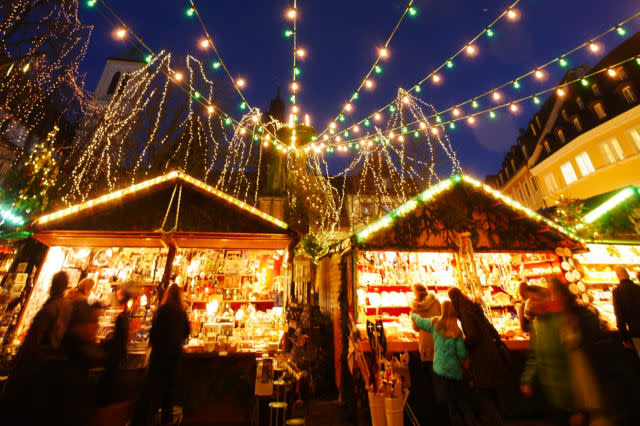How to make money from crafts this Christmas

Christmas is coming, and all over the country an army of elves is busy crafting away to produce unique gifts - and a little extra spending money for themselves.
According to small business insurer Direct Line for Business, over three million people are working to produce special Christmas items for sale, generating sales of over £376 million between them. Six out of ten are women.
The top five items are decorations, cards, festive food, jewellery and toys.
"Inventive Brits are cashing in on the growing demand for home made and personalised goods," says Jane Guaschi, business manager at Direct Line for Business.
"And the increasingly popular online auction sites and marketplaces means Brits can sell homemade craft wares just about anywhere."
The most popular place for Christmas crafters to sell their wares is through Christmas markets, used by 59%, with online auction websites such as eBay almost as popular.
Nearly a quarter use online marketplaces such as Etsy and Not On The High Street, and one in seven has their own website.
%VIRTUAL-ArticleSidebar-Christmas%
If you want to start selling your crafts yourself, there are a number of things to consider.
As Guaschi says, "Many of those making and selling festive items may not even realise they are effectively running a small business and should check if they have any obligations, such as needing to pay tax or take out business insurance to protect their stock or guard against any liabilities resulting from the products they make."
Most important are the tax implications. Using new powers introduced last year, the taxman can now download people's account information to look at what you've been selling.
Earlier this year, it targeted 14,000 people it suspected of failing to declare profits they'd made by selling items through websites such as eBay, Etsy, Amazon and Gumtree - and one eBay vendor who'd made £1.4 million over a six-year period without declaring it was given a two-year prison sentence.
But you don't have to be making that sort of money to be liable for tax. Any earnings above your tax-free personal allowance – £10,600 for the 2015-16 tax year – are taxable if they are considered to come from 'anything in the nature of a trade'.
In other words, selling off a couple of pieces of old furniture doesn't count, but selling home-made crafts does, and you'll need to declare any profits via your self-assessment tax return.
And while most crafters don't get anywhere near making £82,000 in any 12-month period, those that do will have to register for VAT.
All of this means that you'll need to keep proper records of your expenses, inventory and sales.
It's also important to consider your stock. According to Direct Line, Christmas crafters' will keep on average £475 of stock in their homes this Christmas season, which is unlikely to be covered by standard contents insurance.
So how to sell?
You're probably too late to bag a stall at a Christmas market this year - but as they can cost hundreds or even thousands of pounds, this probably isn't a good idea for beginners anyway. If you're considering it for the future, though, there's a list of Christmas markets here, with a form allowing potential traders to register interest.
Selling crafts on eBay can be tricky - most buyers are used to bargain prices and may not be prepared to fork out for hand-made or one-of-a-kind designs. With the right products, though, it can be very lucrative. You can list up to 20 items a month free, with each listing costing 35p after that. There's a commission payment of 10%, and using PayPal costs an extra 3.4%, plus 20p per transaction - there's discounts for high volumes.
However, specialist craft sites such as Etsy and Not On The High Street attract a different kind of buyer.
Etsy charges sellers a listing fee of 13p per item, payable only when the item sells, along with a commission of 3.5%. You can accept payments via PayPal, or through Etsy's own Direct Payments system - this can handle credit and debit cards, Google Wallet, Apple Pay and Etsy Gift Cards, but costs another 4% plus 20p payment processing fee.
Not On The High Street, meanwhile, charges no listing fee - but there's a one-off joining fee of £199, plus 25% commission on each item. For this reason, it's really only for those who expect to shift a lot of stuff.
And what sells best at Christmas?
People buying presents tend to look for something a bit more 'prettied up' than when buying for themselves, so it's a good idea to add a bit of extra decoration or some attractive Christmas-themed packaging.
In terms of pricing, many people set a budget, so keeping items under price points such as £10 or £50 may help. And if you're selling online, use all the keyword tools offered by the site to make sure your items pop up when customers search for Christmas presents.
And when it's all over, try and build in a little rest time so that you can enjoy Christmas yourself!





